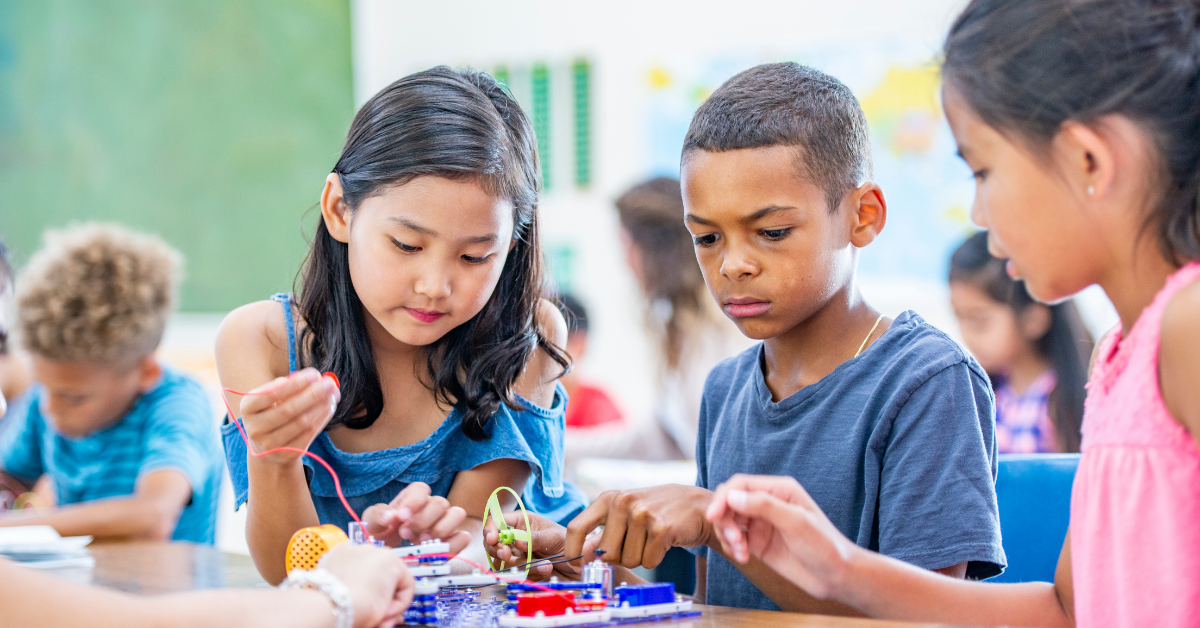
Mindset can change a classroom dynamic, and help to raise a generation of self-aware leaders. Carol Dweck differentiates between growth mindset -- “I love a challenge!” learners, and fixed mindset -- “I’m not a math person,” learners. While both mindsets are powerful enough to dictate success, only one actually leads to it.
How Growth Mindset Works
Living with a growth mindset means understanding that your ability to learn and grow is malleable, and that through applying this idea in your life, you can achieve more than you imagine.
In mental health, having a growth mindset is integral in being able to look a past experience straight in the eye and not letting yourself be defined by it.
In education, having a growth mindset means facing a challenging concept or idea and “luxuriating in ‘the power of yet’” instead of being “gripped in the tyranny of now,” as Dweck puts it.
Much like learning a new concept in school, understanding this idea is one thing, but being able to apply it is another. While a simple concept, a Growth Mindset can change the entire future potential of our students, and ourselves.
Give Feedback in Growth Mindset Language
Dweck demonstrates how the word “yet” has the opportunity to open up a vast array of outcomes that many black-and-white statements don’t. She explains that adding “yet” to commonly used sentences helps give students the ability to open up to the future instead of being confined to the past or present:
“You didn’t answer that problem correctly.”
→ “You didn’t answer that problem correctly, yet.”
“You’re not ready for the next chapter.”
→ “You’re not ready for the next chapter, yet.”
“None of you have listened to me today.”
→ “None of you have listened to me today, yet.”
You might see how such a little word can change a sentence so much. But “yet” isn’t the only easy way of adding opportunity to sentences. The key is to focus statements on progress instead of perfection by encouraging students to think for themselves, and teachers to be the mere medium and means of guidance, as opposed to an all-knowing dictatorial power.
It’s also helpful to name what students are doing on the road to getting it right:
“I noticed how…”
“You have a really nice way of…”
“You seem to…”
“Am I correct in thinking that you…”
By naming students approximations, students are encouraged to keep trying to get it right.
Incorporate Self-awareness into Instruction
Growth mindset and self-awareness come hand-in-hand. When students begin learning more self-awareness, they’ll be able to recognize behaviors that are holding them back from believing in themselves. Bringing them back to their internal emotions is helpful, especially when lessons become more and more rigorous.
Growth mindset can be nurtured by taking instructional time to focus on self-awareness, such as:
- Scheduling class time to journal about upcoming assignments and projects
- Setting benchmarks for long or time-consuming tasks so students can visualize their progress
- Utilizing SEL tools to help students self-reflect on how they’re handling problems inside and outside of the classroom
Center Activities around Strategy, Not Outcomes
When thinking of growth mindset, many times the learning process is more important than the end result. Evaluating students based on how they get to their conclusions helps to foster their own inventive creativity inside of themselves.
Choose projects that are appropriate to your grade level or content area and allow students to explore different ways to model their learning. During the process, find ways for students to write and reflect about their reasoning, defend their judgments, or explore alternate solutions.
These passion projects allow students to lean into what they’re strong at and seek help for what they’re struggling with while utilizing their own ideas.
Model Growth Mindset Yourself
The one way to help your students master growth mindset is by using it yourself. Look at how you speak to yourself on a daily basis--it can say a lot about how you may subconsciously be placing expectations on yourself, as well as on your family, friends, and students.
Some questions that could trigger self-reflection around growth mindset include:
How do I speak to myself?
What am I saying to myself that may be placing me at a disadvantage?
What past experiences am I using in the hopes of defining my future potential?
What definitive statements do I use frequently, i.e.
“I never…”
“my kid never wants to…”
“my students are always so…”
...And how would my mindset change if I added “today” or “yet” to these phrases? I.e.
“I haven’t wanted to exercise yet.”
“Today, my kid didn’t want to go outside.”
“Yesterday, my students were distracted.”
Growth mindset is a tool that can change a teacher-class relationship drastically. By inputting small changes into the way you guide both your students and yourself, you may just see how much having a headspace geared towards endless possibilities can position you for even more greatness than you could have imagined.
References
https://wabisabilearning.com/blogs/mindfulness-wellbeing/growth-mindset-activities-kids
https://lisalatimer.com/how-self-awareness-helps-your-mindset/

